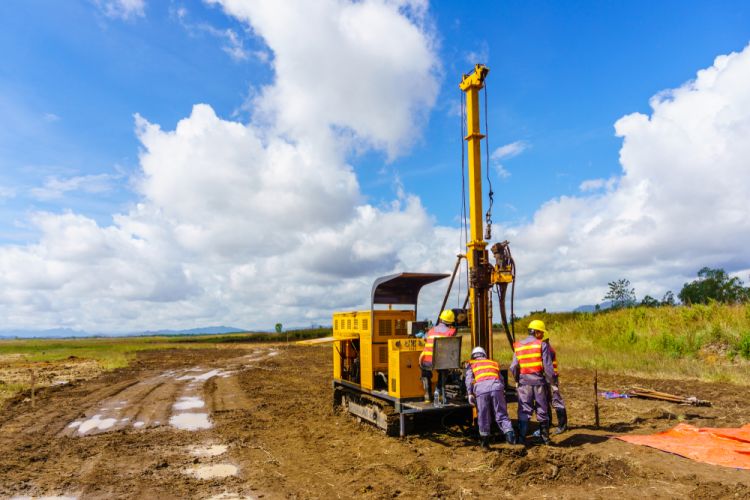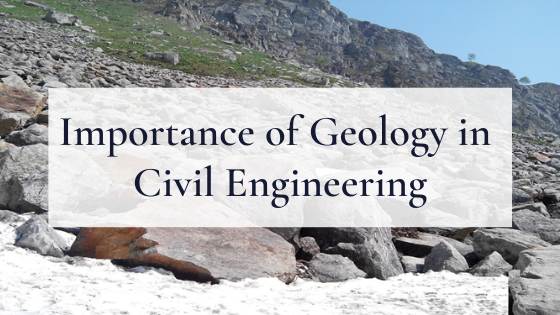The Facts About Geotechnical Engineering For Construction Projects Uncovered
The Facts About Geotechnical Engineering For Construction Projects Uncovered
Blog Article
Geotechnical Engineering For Construction Projects Fundamentals Explained
Table of ContentsHow Geotechnical Engineering For Construction Projects can Save You Time, Stress, and Money.Things about Geotechnical Engineering For Construction ProjectsThe Only Guide for Geotechnical Engineering For Construction ProjectsSome Known Incorrect Statements About Geotechnical Engineering For Construction Projects 7 Simple Techniques For Geotechnical Engineering For Construction ProjectsThe Ultimate Guide To Geotechnical Engineering For Construction ProjectsThe 5-Minute Rule for Geotechnical Engineering For Construction Projects
"A report could be 25 years old, so the inquiry is: Has there been a building on that website considering that they've done the report? Also in the case of a restore, a geotechnical report performed 10 years before is most likely too old.Both Cheryl and Joseph shared instances of red flags and failings associated to geotechnical concerns. Cheryl kept in mind that, during building and construction of the LRT passage in Ottawa (not a project she was included with), a large sinkhole opened up on Rideau Street, likely from the instability of damp, sandy dirt in the area.
Unknown Facts About Geotechnical Engineering For Construction Projects
He added that, when home builders and programmers prepare to make use of an uncommon or uncommon construction technique, this might be a red flag on a geotechnical record. With any geotechnical record, Joseph emphasized: "It's extremely vital for designers and specialists to revisit and conform with the referrals. Geotechnical engineers are included in all phases of the layout of frameworks, from idea to building.
The Ultimate Guide To Geotechnical Engineering For Construction Projects

In the world of building and civil design, geotechnical design is a foundation self-control that makes sure the safety and security, resilience, and sustainability of any project. Without a solid understanding of the dirt, rock, and various other planet products at a site, building dependable facilities would be nearly difficult. At STS Geotechnics we highly count on the relevance of conveying the important role the Geotechnical Design plays in contemporary building, site growth, and ecological stewardship.
Geotechnical engineers evaluate dirt, rock, groundwater, and various other subsurface conditions to examine their suitability for building. This knowledge allows them to anticipate how these materials will react to structures like structures, roads, dams, and bridges, assisting guarantee secure and steady foundations. Every structure or infrastructure job counts on a structure that is risk-free and stable.
Geotechnical design aids protect against numerous environmental dangers that can jeopardize both people and the atmosphere. Via dirt evaluation, engineers can identify possible problems like landslides, dirt liquefaction, and erosion risks.
The Ultimate Guide To Geotechnical Engineering For Construction Projects
For example, designers could develop tasks that reduce the requirement for too much excavation or decrease land disruption, adding to the preservation of natural environments and lowering the carbon impact of construction projects. Appropriate geotechnical examination can dramatically lower building and construction expenses by recognizing potential troubles prior to building begins. Understanding the subsurface problems helps in picking the most effective structure kind and other structural components, hence staying clear of pricey redesigns and fixings.
They examine natural catastrophe dangers like earthquakes, flooding, or hurricanes and aid develop frameworks that are prepared for these occasions. This resilience is particularly vital as climate adjustment results in more constant and severe climate events.: Making certain a stable structure is essential for any type of here framework. Geotechnical engineers evaluate dirt and rock problems to suggest the best structure layout for stability and longevity.
The standard determines that geotechnical website investigations adhere to an iterative procedure (illustrated listed below) in which the outcomes of the investigation are evaluated against the function for which the examination is being performed with additional examinations planned as needed. Basically, ground make-up and problem can vary considerably also within a small site.
Projects that ignore this vital solution risk their growth splitting, leaning, sinking, slipping and potentially falling down as the planet below it moves. Experience dictates that a Geotechnical Engineer must be generated throughout the initial drawing board of any kind of construction job. Only then can their skills, knowledge and referrals be made use of to stop building complications before they occur.
Get This Report about Geotechnical Engineering For Construction Projects
Worldwide of building and construction, every structure bases on a foundation and that foundation is developed on the experience of geotechnical design. Usually undetected but undeniably vital, geotechnical engineering plays a pivotal function in making certain the security, security, and longevity of frameworks. From skyscrapers to bridges, roadways to dams, the value of geotechnical engineering can not be overemphasized.

Our Geotechnical Engineering For Construction Projects Diaries
Incline stability and Planet retention: In sloping or sloped terrain, keeping slope security is vital to protect against landslides, disintegration, and dirt motion. like this Geotechnical designers view website examine the stability of inclines and design planet retention systems such as keeping wall surfaces or slope stablizing procedures to alleviate risks and make sure safety. Ground improvement methods: In many cases, the soil problems at a building site may be improper for building without prior treatment.
Before mounting pipes, tunnels, or underground centers, geotechnical designers evaluate soil conditions and groundwater degrees to ensure appropriate positioning and prevent potential dangers such as dirt negotiation or pipeline damages. Construction material choice: Soil residential properties affect the selection of construction materials and strategies. Geotechnical engineers examine dirt attributes to establish the viability of materials for foundations, embankments, and earthworks.
An Unbiased View of Geotechnical Engineering For Construction Projects
By executing aggressive upkeep measures, designers prolong the life-span of structures and secure against unanticipated concerns. Finally, the relevance of geotechnical design in building jobs can not be overstated. From ensuring the security of foundations to taking care of ecological dangers, geotechnical engineers play a vital role in every phase of the construction process.
Report this page